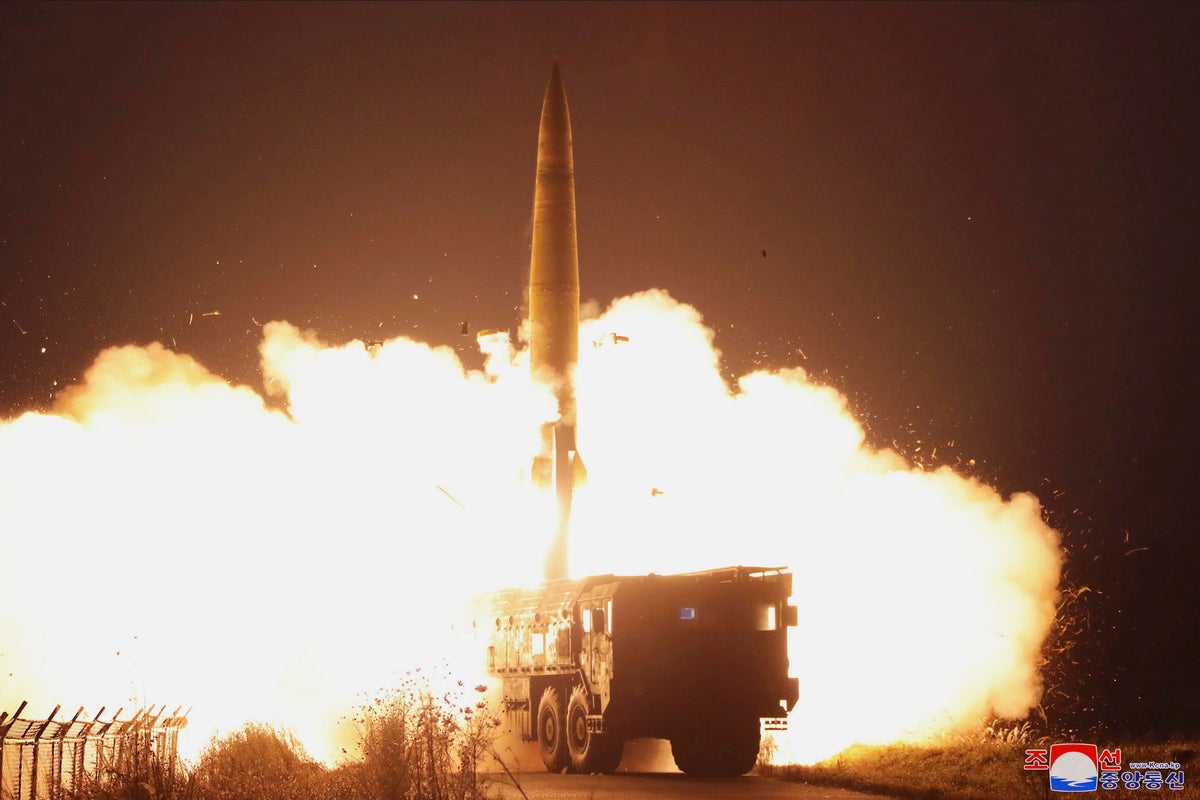
For days North Korean officials have raged over U.S.-South Korean military drills, promising a violent response. That response came this week, when the North fired more than 20 missiles — one of which splashed down near the South Korean sea border.
It was a significant escalation in a year that has already seen the most North Korean missile test launches ever, and it raises an important question: How much further will they go?
North Korea’s playbook has traditionally been to continually ratchet up provocations until it gets U.S. attention — and can then negotiate for sanctions relief or other concessions from what it sees as a position of power.
The bar for getting attention these days may be higher, with the United States focused on upcoming elections and Russia and the West consumed by the war in Ukraine. That could mean the North has to do more to get the reaction it wants — but it also increases the possibility that Pyongyang could end up pushing South Korea too far. Already there is growing discussion in Seoul about creating an indigenous nuclear program.
North Korea observers have long sketched out the various levels Pyongyang uses to express its anger. At the bottom of the list is fiery rhetoric in state-controlled media. That may then progress into shorter-range missile launches of the type seen Wednesday.
After that would come longer-range tests, including ICBMs designed to target the United States or intermediate missiles like the ones that the North has sent hurtling over the Japanese archipelago in the past, deep into the Pacific. At the top of the list is a test detonation of one of their nuclear devices.
Each new level cranks up already soaring tensions on the Korean Peninsula, where hundreds of thousands of troops from both sides and the United States square off along the world’s most heavily armed border.
And while bloodshed these days is fairly rare (2010, by contrast, saw 50 South Koreans killed in attacks), this many troops operating with these types of powerful weapons in a relatively confined geographic area increases the chances that a miscalculation could lead to a clash.
One of the 23 missiles fired Wednesday landed close enough to a South Korean island for air raid sirens to sound and residents there to evacuate to underground shelters. Another landed 26 kilometers (16 miles) from the Koreas’ shared border.
Anxiety was already running high because hours earlier North Korea threatened to use nuclear weapons so that the United States and South Korea would “pay the most horrible price in history.”
For months, South Korean and U.S. officials have been expecting North Korea to test a nuclear bomb. It would be the seventh such test, and be met with a push at the United Nations for even stronger sanctions. Whether Russia and China, nations that have traditionally protected the North, will allow further U.N. punishment is unclear.
It’s important to note that each North Korean weapons test — whether of the shortest range missile or a nuclear bomb — inches Pyongyang’s scientists closer to their ultimate goal of a fully functional nuclear arsenal capable of targeting every city on the U.S. mainland.
A recent analysis based on satellite imagery showed that the North has made dramatic progress on new construction at its Sohae Satellite Launching Station.
In addition to expanding its ability to send up satellite launch vehicles, the station could “support technology development also useable by North Korea’s emerging intercontinental ballistic missile programs,” wrote Joseph S. Bermudez Jr., Victor Cha and Jennifer Jun, of the Center for Strategic and International Studies think tank in Washington.
The latest launches follow a string of North Korean tests of nuclear-capable missiles. And a new North Korean law authorizes the preemptive use of nuclear weapons in a broad range of situations, though there’s widespread doubt the North would use those bombs first in the face of U.S. and South Korean forces.
North Korea says it is responding to U.S.-South Korean military drills that it views as a rehearsal for an invasion.
But Pyongyang is also well aware of what’s happening in the world — especially as it relates to its rivals. U.S. President Joe Biden is preparing to travel to Asia for a series of summits, and is facing crucial midterm elections this month.
A lot is vying for Biden’s attention, but Pyongyang has also previously timed its weapons tests around American elections, presumably in the hopes of pushing itself higher on presidents’ foreign policy to-do lists.
There’s also the war in Ukraine, where Russia has suffered a series of setbacks recently. North Korea may realize that Moscow, which has been a supporter of the North and its military for decades, could benefit from the distraction the missile tests create for Washington.
And the barrage also comes as South Korea mourns the deaths of more than 150 people when a crowd of Halloween revelers surged — the country’s largest disaster in years.
But another North Korean nuclear test could also be a risk for the North itself, Jeffery Robertson, an associate professor of diplomatic studies at Yonsei University, wrote recently.
“Over the last thirty years, a rough balance has been established between South Korea’s vastly superior conventional capacity (and its alliance with the U.S.) and North Korea’s nascent nuclear weapons capacity,” he said.
But should South Korea pursue its own independent nuclear weapons capacity, “this balance ceases to exist.”
Don’t expect that to stop North Korea in the short term, though, as Pyongyang looks to use its full array of weapons to get what it wants.







